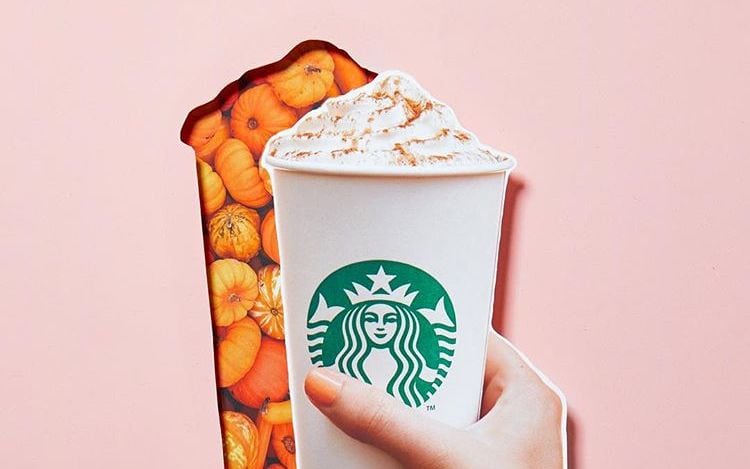Would fall really be fall if we didn’t have the Pumpkin Spice Latte from Starbucks? Probably. But whether you love it or hate it, the autumn-flavored beverage has become a staple of society. It’s odd to picture a time when it didn’t exist. However, before the PSL became the billion dollar icon it is today, it went through a series of strange phases — and one involves it having a different name.
In 2003, the same year From Justin To Kelly came out and Hilary Duff released “So Complicated,” Peter Dukes, a product manager in Starbucks’s espresso division, was told to come up with a fall-themed beverage that performed as well as the Peppermint Mocha. Dukes and his team hunkered down in the “Liquid Lab” at the Starbucks Seattle headquarters and got to work.
According to a 2014 Seattle Met piece, the team came up with about 20 different autumnal flavors and polled Starbucks customers online to see which flavor spoke to the consumers. The pitch of a “pumpkin pie latte” didn’t go over well.
But, despite the negative feedback, Dukes and his team liked the idea and continued to develop a pumpkin pie-flavored coffee drink.

The team zeroed in on the pumpkin and spice flavors after they sat down and ate pumpkin pie while drinking espresso. They then messed around with the pumpkin to spice ratio until they settled on a perfect flavor profile. The Seattle Met notes that the team also decided to use a pumpkin sauce rather than syrup to replicate the mouthfeel of actual pumpkin pie.
Side note: how do we get this job?
Finally, the team had to figure out what to call their new baby. “Initially we were being asked to come up with a name that matches the season,” Dukes recalled to the Seattle Met. The team first came up with “Fall Harvest Latte.” Fall Harvest Latte?

“Fall Harvest Latte” didn’t quite make the cut, and thank goodness. To us, the name evokes eating crunchy dead leaves or gnawing on raw corn rather than sipping on some hot pumpkin-y goodness. Luckily, “Pumpkin Spice Latte” was brought to the table soon after.
And the rest is history. Once it was released to the public, PSL sales went bonkers. In the 15 years the PSL has been on the market, Starbucks has sold over 350 million servings. And with Pumpkin Spice Lattes officially back in Starbucks locations as of August 28th, that number will surely continue to grow.
We’re glad the PSL is the PSL and not the FHL. It just doesn’t have the same ring to it.

Want to know if you’re destined to love the PSL? We figured out which zodiac signs are basically the Pumpkin Spice Latte’s soulmates.

